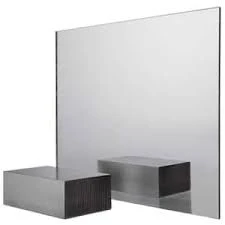

The Allure of Decorative Glass A Journey Through Craftsmanship
Decorative glass has long held a cherished place in art and architecture, captivating audiences with its brilliance, color, and texture. From stained glass windows that grace centuries-old cathedrals to modern art pieces that adorn contemporary homes, decorative glass is a testament to human creativity and the skilled craftsmanship that brings it to life. This article explores the world of decorative glass, focusing on its history, techniques, and its significant role in modern design.
A Historical Perspective
The art of decorative glass dates back to ancient civilizations. The earliest examples can be traced to the Egyptians, who created intricate glass beads and vessels. However, it was the Romans who perfected glass-making techniques, enabling the production of more complex forms, including mosaics and decorated windows. The Middle Ages saw a resurgence of glass artistry with the rise of stained glass windows in Gothic cathedrals. These spectacular creations were not merely decorative; they served to illuminate the religious narratives cherished by the faithful.
As time progressed, the Renaissance brought renewed interest in the artistic potential of glass. Artisans began to experiment with various techniques, such as engraving, etching, and coloring glass, paving the way for the exquisite pieces we see in decorative glass factories today.
Techniques in Decorative Glass
Decorative glass manufacturing is an artisanal endeavor that encompasses a variety of techniques. One of the most celebrated methods is stained glass. This craft involves assembling pieces of colored glass to create intricate designs, often depicting stories and scenes from history or religion. Each piece is carefully cut, shaped, and soldered together, resulting in stunning mosaics that catch the light and project vibrant colors.

Another popular technique is blown glass, where artisans blow air into molten glass to shape it into various forms. This method allows for the creation of unique sculptures, vases, and even lighting fixtures that can become focal points in any space. Blown glass can be combined with other techniques, like layering and fusing, for added artistic depth and complexity.
Etching and engraving are also prevalent in decorative glass production. These methods involve carving designs into the glass surface, creating intricate patterns that can range from simple motifs to elaborate scenes. The etching process can be enhanced with the use of acid or sandblasting, resulting in a variety of textures and finishes that appeal to different tastes.
The Modern Decorative Glass Factory
Today, decorative glass factories play a vital role in preserving the art of glassmaking while innovating new forms and designs. Many factories employ skilled artisans who blend traditional techniques with contemporary artistry, resulting in pieces that resonate with both history and modern aesthetics. These factories often emphasize sustainable practices, using recycled materials and energy-efficient methods, thus contributing to a greener future while maintaining the integrity of their craft.
Moreover, decorative glass has found its way into various domains, including interior design, architecture, and fashion. Designers often incorporate decorative glass elements in spaces to create a sense of elegance and sophistication. From stunning glass partitions that enhance natural light to chic glass accessories that add flair to any decor, the versatility of decorative glass is unparalleled.
Conclusion
The journey of decorative glass from ancient times to modern-day factories is a testament to the enduring legacy of human creativity. With a blend of tradition and innovation, decorative glass continues to capture the imaginations of artists and enthusiasts alike. As we embrace the beauty of decorative glass in our lives, it is essential to appreciate the craftsmanship behind each piece, reminding us of the stories and skills that lie within every fragile surface.